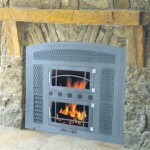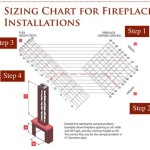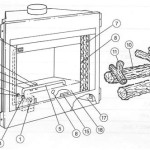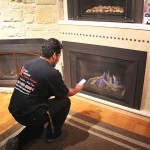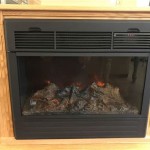Non-Combustible Materials for Fireplace Surrounds: A Comprehensive Guide
A fireplace surround is the decorative frame that surrounds the fireplace opening, enhancing its aesthetic appeal and protecting the surrounding wall from heat and damage. While aesthetics are paramount, choosing non-combustible materials for your fireplace surround is of utmost importance for safety and durability. This article will delve into the essential aspects of selecting non-combustible materials for fireplace surrounds, exploring popular choices, their pros and cons, and factors to consider for a safe and stylish fireplace environment.
Understanding Non-Combustible Materials
Non-combustible materials are substances that resist ignition and combustion even when exposed to high temperatures. For fireplace surrounds, this is crucial because the immediate vicinity experiences extreme heat during operation. Fireplace surrounds must withstand these temperatures without igniting or releasing harmful fumes. Common non-combustible materials used in fireplace surrounds include:
- Stone: Natural stones like granite, marble, limestone, and slate are highly heat-resistant and durable. They offer a wide range of colors and textures, enhancing the elegance of the fireplace.
- Brick: Firebrick, specifically designed for high-heat applications, is a strong and aesthetically pleasing option for fireplace surrounds. It is available in various colors and patterns, providing versatility in design.
- Metal: Stainless steel, copper, and wrought iron are excellent choices due to their high heat resistance and durability. They are often used for modern and industrial-style designs.
- Concrete: Concrete, when treated with heat-resistant coatings, can be a cost-effective and versatile material for fireplace surrounds. It allows for customization and can mimic the appearance of other materials.
- Tile: Ceramic and porcelain tiles, especially those explicitly designed for fireplaces, provide excellent heat resistance and water resistance. They are available in countless designs and styles, enabling creative fireplace surround aesthetics.
Factors to Consider When Choosing Non-Combustible Materials
Several factors must be considered when selecting non-combustible materials for your fireplace surround, ensuring a safe and aesthetically pleasing outcome:
1. Heat Resistance
The primary concern is the material's ability to withstand the high temperatures generated by the fireplace without warping, cracking, or releasing harmful substances. Consult with manufacturers or a qualified professional to determine the specific heat tolerance of the chosen material.
2. Durability and Longevity
The fireplace surround should be durable enough to withstand the repeated exposure to heat, moisture, and potential impacts. Materials like stone, brick, and metal excel in durability, while concrete and tile require proper installation and maintenance to ensure longevity.
3. Aesthetics and Style
The fireplace surround should complement the overall design of the room and your personal preferences. Consider the color, texture, and style of the material, ensuring it harmonizes with the existing décor and complements the fireplace's focal point.
4. Maintenance Requirements
Various materials necessitate different levels of maintenance. Natural stone might require sealing to prevent staining, while metal surfaces may need periodic cleaning to maintain their sheen. Evaluate the maintenance efforts involved before making a final decision.
5. Budget
Different materials come with varying price tags. Stone and metal are generally more expensive than concrete or tile. Evaluate your budget and prioritize materials that offer the desired aesthetics and functionality within your financial constraints.
Advantages and Disadvantages of Popular Non-Combustible Materials
To aid in the selection process, let's examine the advantages and disadvantages of some popular non-combustible materials for fireplace surrounds:
Stone
Advantages: Elegant, natural appearance, high heat resistance, durability, wide variety of colors and textures. Disadvantages: Costly, heavy, requires specialized installation, potential for staining or discoloration.
Brick
Advantages: Durable, aesthetically pleasing, good heat resistance, relatively affordable. Disadvantages: Can be heavy, requires skilled installation, limited color and pattern options.
Metal
Advantages: Excellent heat resistance, modern and sophisticated design, easy to clean, durable. Disadvantages: Can be expensive, prone to scratching or dents, may require maintenance.
Concrete
Advantages: Versatile, customizable, cost-effective, can mimic the look of other materials. Disadvantages: Requires specialized coatings for heat resistance, prone to cracking if improperly installed, may require regular sealing.
Tile
Advantages: Wide variety of colors, patterns, and styles, easy to clean, relatively affordable, resistant to water and moisture. Disadvantages: Requires skilled installation, grout lines require regular cleaning, some types may not be as heat-resistant as others.
By carefully analyzing these factors and advantages/disadvantages, you can make an informed choice for your fireplace surround, ensuring a safe, stylish, and durable addition to your home.

Non Combustible Materials Explained Regency

Non Combustible Materials Explained Regency

Fireplace Safety And Codes

7 Popular Materials For Fireplace Surrounds

Fireplace Design Idea 6 Diffe Materials To Use For A Surround

Fireplace Mantel And Surround Clearances Fine Homebuilding

Fireplace Construction

Non Combustible Utah Fireplace Materials Basics And Necessity Comfort Solutions

Dk Studio
Mantle And Fireplace Surround Minimum Clearances

